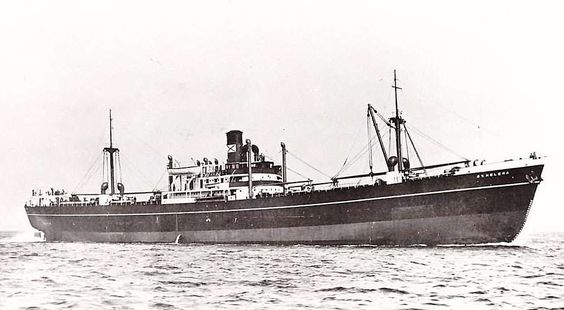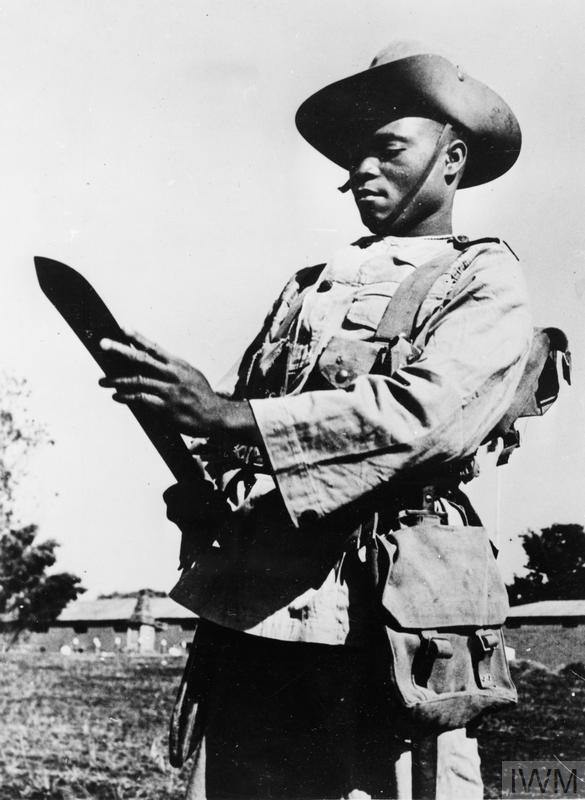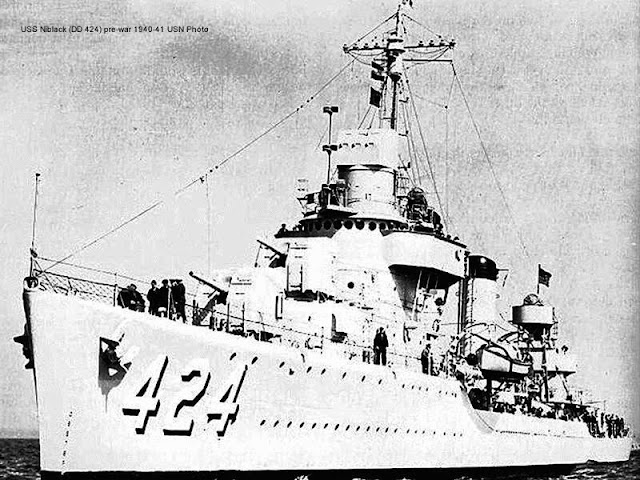Saturday 12 April 1941
 |
| Soldiers of SS-Hauptsturmführer Fritz Klingenberg's 2nd SS Division Das Reich enter Belgrade, 12 April 1941. |
Belgrade will become the seat of the puppet Nedić regime, headed by General Milan Nedić. Due to its quick surrender, Belgrade is spared the savagery of artillery bombardment that accounts for the preponderance of devastation of European cities on the Continent throughout the war even in the presence of terror bombing.
Hungarian troops (3rd Army) join the invasion of Yugoslavia.
While the occupation of Belgrade, of course, is a matter of great significance, its fall has been a foregone conclusion. The real issue of decision is playing out far to the south. Sepp Dietrich's 1st SS Panzer Division Leibstandarte SS Adolf Hitler (LSSAH), still of brigade-size at this time, begins the day being held up in the Klidi Pass. This is the key route for the Wehrmacht LX Corps (Lieutenant-General George Stumme) heading south from Yugoslavia into the Greek interior. This battle effectively decides the campaign in Greece, though much fighting remains to be done.
Snow fell during the night. At 09:00, the Germans, after being frustrated on the 11th by the British, Australian and Greek troops ("Mackay Force") that had hurriedly been redirected to the Pass from the Aliakmon Line to the east, resumes its attack. The LSSAH first takes a hill off their left flank, Hill 997, taking it by 11:00 and wiping out all but 6 of the Australian defenders. These Germans, the 1st Company of LSSAH, then take another hill nearby. The Australians troops begin to withdraw around mid-day, though the Greek troops nearby stay put - though sources are mixed on exactly who did what.
The Germans then bring up assault guns and Panzerjäger vehicles and continue their assault from the two hills they have taken. By 14:00, the Greek troops also are ordered to retreat by General Iven Mackay, and Obersturmbannfuhrer "Panzer" Meyer leads his assault guns forward into hills that had been thought inaccessible. By 16:00, the Germans take Klidi at the southern end of the pass, then spread out quickly to take nearby towns Kelli and Petra. By 20:00, the German armor (six StuG and nine PzJg I) are through the pass and harassing a retreating Greek column, forcing the British to riposte with about 25 tanks of their own. By 22:30, after a very hard day of fighting, the Germans have secured the entire pass, inflicting severe casualties on the defending Australians.
Allied histories cast a favorable light on the battle of Klidi Pass. The defense "bought time for the retreat" of Allied forces on the Aliakmon Line. However, when the battle began, there was no thought of retreating anywhere, and the battle only held the Germans up for two days. Many Greek troops are given the order to retreat too late, and they wind up essentially surrounded by the advancing Germans. The Allied withdrawal is pell-mell, with units intermixed, leading to confusion that remains throughout the campaign. The Allies attempt to form a new defensive line to the south at Kleisoura and begin pulling back their troops in northern Greece toward Mount Olympus.
General Iven Mackay renames his troops from 1 Australian Corps to Anzac Corps to honor the New Zealanders taking part.
The powerful Greek Western Macedonia Army formations in Albania to the west are seeing their lines of communication cut by the German LX Corps advance, but are reluctant to retreat. General Stumme's forces also attempt to broaden their gains to the west. With this German breakthrough, their position is even less secure. However, it is a matter of Greek pride to give no ground to the Italians, so today they only grudgingly begin heading south, blowing up the roads as they leave to slow the Italian advance. The Italians, meanwhile, watch them go without pursuing them today.
The British reinforcement of mainland Greece, Operation Lustre, continues despite the reversals to the north. The Australian 17th Infantry Brigade arrives today at Athens.
The Luftwaffe attacks Piraeus again, bombing and sinking 8271-ton British tanker Marie Maersk. The Italians later re-float and repair her, putting her in use as the Luisa. This sinking continues the devastation wrought on the Danish Mærsk shipping line, which began the wars with a total of 46 ships but dwindles to 7 by war's end, with an additional 14 under control of the US shipping board until 1946. Denmark, of course, is a non-combatant that is occupied by Germany.
The Luftwaffe raids Yugoslav shipping on the Danube and sinks river monitor Drava. There are 54 deaths and 13 survivors.
For his successes in Yugoslavia and Greece, Lieutenant General Alexander Löhr, commander of Luftwaffe IV in Austria, receives a highly coveted mention in the evening's Wehrmachtbericht radio despatches. The Yugoslavs consider the bombing of Belgrade to be a war crime, and they have long memories.
One of the common themes of April 1941 is a large number of ships scuttled to avoid enemy capture. Up to now, those have been primarily Italian freighters in the Red Sea. Today, the shoe is on the other foot as the Yugoslavs scuttle three monitors at the confluence of the Danube and Sava Rivers near Belgrade to avoid capture: Morava, Sava, and Vardar. The captains decide to sink the ships because the water levels are too high (spring flood) and nearby bridges too low to prevent departure. As the crews are taken off by a tugboat, they pass under a railway bridge rigged for demolition and set off the charges accidentally. This causes the bridge to collapse on the tug, killing 95 of the 110 crew from the three ships. The Independent State of Croatia will raise and repair two of the ships (Sava and Morava), putting them back into service.
 |
| The Todd-Bath East Yard, site of the construction of Liberty Ships, 12 April 1941. |
Visiting Australian Prime Minister Robert Menzies, in Bristol to receive an honorary degree, comments on the devastation of last night's Luftwaffe raid:
Bristol is a sad sight - churches blazing and streets of houses in ruins but St. Mary Radcliffe, the "fairest church in Christendom" of Elizabeth, stands untouched among the ruins. So I must say, seemed also the spirit of the university, where many a gown was worn over working uniform, and many learned participants had been up fire-fighting all night.
 |
| St. Helena, sunk today by U-124. |
German raider Kormoran sinks 5486-ton Greek freighter Nicolaos D. L. midway between the closest points of Africa and Brazil. All aboard are taken as prisoners.
The Luftwaffe bombs and sinks 901-ton Belgian freighter Arbel just northwest of Land's End, Cornwall. There are three deaths.
The Luftwaffe bombs and sinks 3815-ton Swedish freighter Kexholm south of the Faroe Islands. Everyone survives.
The Luftwaffe sinks grain elevator Chicago at Millwall Dock, London. There apparently is nobody on board.
The Luftwaffe bombs and damages 4093-ton British freighter Dartford just south of Mumbles Lighthouse south of Swansea. The freighter is towed back to port.
Royal Navy 31-ton drifter HMT Rypa, manned by a Norwegian crew, sinks in Loch Ewe in stormy weather.
German raider Thor refuels from tanker Ill. It now heads back to Germany.
Convoy OB 309 departs from Liverpool.
 |
| Liberty Magazine (Canada) Easter 1941: April 12, 1941, Vol, 18, No. 15. |
The Germans wish to move quickly against Tobruk, and they have an excellent source of intelligence about the fortress: the Italians who built it. However, the Italians are very slow to provide detailed information, forcing the Germans to rely on 1:400,000 maps which provide no worthwhile details. General Rommel moves his command post to about 4 km west of the Via Balbia that runs parallel to Tobruk. At this time, his intelligence sources are unclear about the amount of opposition that he faces in Tobruk. While he thinks that there are few troops holding the fortress, in fact, the British have accumulated about 30,000 men there. The Luftwaffe attacks Tobruk and loses three Junkers Ju 87 Stukas.
While the British are determined to hold Tobruk, considered virtually impregnable (but the Italians thought so in January), they fortify Halfaya Pass and the coastal strip nearby to prevent an Afrika Korps eruption into Egypt. There are some minor skirmishes in that area, with the RAF bombing and strafing German columns and the Germans claiming to knock out some British tanks.
Royal Navy submarine HMS Tetrarch torpedoes and sinks Italian tanker Persiano about 30 miles (56 km) northeast of Tripoli. It goes down with 2200 cubic meters of gasoline headed to the Afrika Korps tanks.
A flotilla of four destroyers now based on Malta leaves port to intercept a southbound convoy from Naples to Tripoli. However, the destroyers find no sign of the convoy. The RAF also sends patrols out from St. Angelo on Malta to find the convoy, and they do - but they score no hits while losing a plane and four men from No. 803 Squadron. The four airmen wind up interned by the French.
Four Royal Navy destroyers conduct a patrol off Cyrenaica in Operation MBD 3. However, they find no sign of Axis shipping.
British evacuations begin again, this time in Greece. Four ships, including troopship HMS Glenroy, evacuate an entire battalion of troops, forty army vehicles, and 1000+ tons of stores from Moudros on the northern Aegean island of Lemnos.
The British beef up their naval forces in Gibraltar. Among the ships arriving is battlecruiser HMS Repulse and light cruiser Fiji. Submarine HMS Olympus arrives at Malta, but is in poor repair and quickly is sent back to Gibraltar.
Royal Navy armed merchant cruiser HMS Dunnottar castle, cruising off of Mauretania, seizes Vichy French freighter Banfora off Port Etienne (Nouadhibou). The Banfora is taken to Freetown.
In Malta, air attacks continue. Just before midnight, nine Luftwaffe planes strafe the airbase at Kalafrana and drop bombs on the St. Paul's Bay area. Another raid causes damage to the Ta Qali airfield area.
 |
| The New Yorker, 12 April 1941. |
US Army Air Corp General Henry "Hap" Arnold arrives in London for talks with the British leadership about cooperation with the RAF.
US/Greenland Relations: With an agreement in hand to establish bases in Greenland, the US sends three coast guard cutters and some US Marines to Greenland. The German government and (occupied) Danish government protest, but the US government ignores them.
 |
| HNoMS Mansfield. |
Soviet Military: Soviet Premier Joseph Stalin has been receiving a wave of warnings from numerous sources about a possible German invasion to commence as soon as 15 May. While he dismisses the warnings, he hedges his bets by issuing a secret directive to construct fixed defenses on the western frontiers.
 |
| An African soldier of the King's African Rifles holding his panga, or machete, circa 12 April 1941 (© IWM (K 45)). |
German Government: Adolf Hitler arrives at his forward headquarters of Mönichkirchen on his train "Amerika." He is just in time to be portrayed in the media as leading his troops to victory at Belgrade.
American Homefront: "Life of Riley" begins its run on the CBS Radio Network. This series stars Lionel Stander as J. Riley Farnsworth. It has no relation to the more famous "The Life of Riley" radio show that begins on 16 January 1944 starring William Bendix.
The Boston Bruins beat the Detroit Red Wings, 3-1, to win the Stanley Cup in a four-game sweep.
April 1941
April 1, 1941: Rommel Takes Brega
April 2, 1941:Rommel Takes Agedabia
April 3, 1941: Convoy SC-26 Destruction
April 4, 1941: Rommel Takes Benghazi
April 5, 1941: Rommel Rolling
April 6, 1941: Operation Marita
April 7, 1941: Rommel Takes Derna
April 8, 1941: Yugoslavia Crumbling
April 9, 1941: Thessaloniki Falls
April 10, 1941: USS Niblack Attacks
April 11, 1941: Good Friday Raid
April 12, 1941: Belgrade and Bardia Fall
April 13, 1941: Soviet-Japanese Pact
April 14, 1941: King Peter Leaves
April 15, 1941: Flying Tigers
April 16, 1941: Battle of Platamon
April 17, 1941: Yugoslavia Gone
April 18, 1941: Me 262 First Flight
April 19, 1941: London Smashed
April 20, 1941: Hitler's Best Birthday
April 21, 1941: Greek Army Surrenders
April 22, 1941: Pancevo Massacre
April 23, 1941: CAM Ships
April 24, 1941: Battle of Thermopylae
April 25, 1941: Operation Demon
April 26, 1941: Operation Hannibal
April 27, 1941: Athens Falls
April 28, 1941: Hitler Firm about Barbarossa
April 29, 1941: Mainland Greece Falls
April 30, 1941: Rommel Attacks
2020








